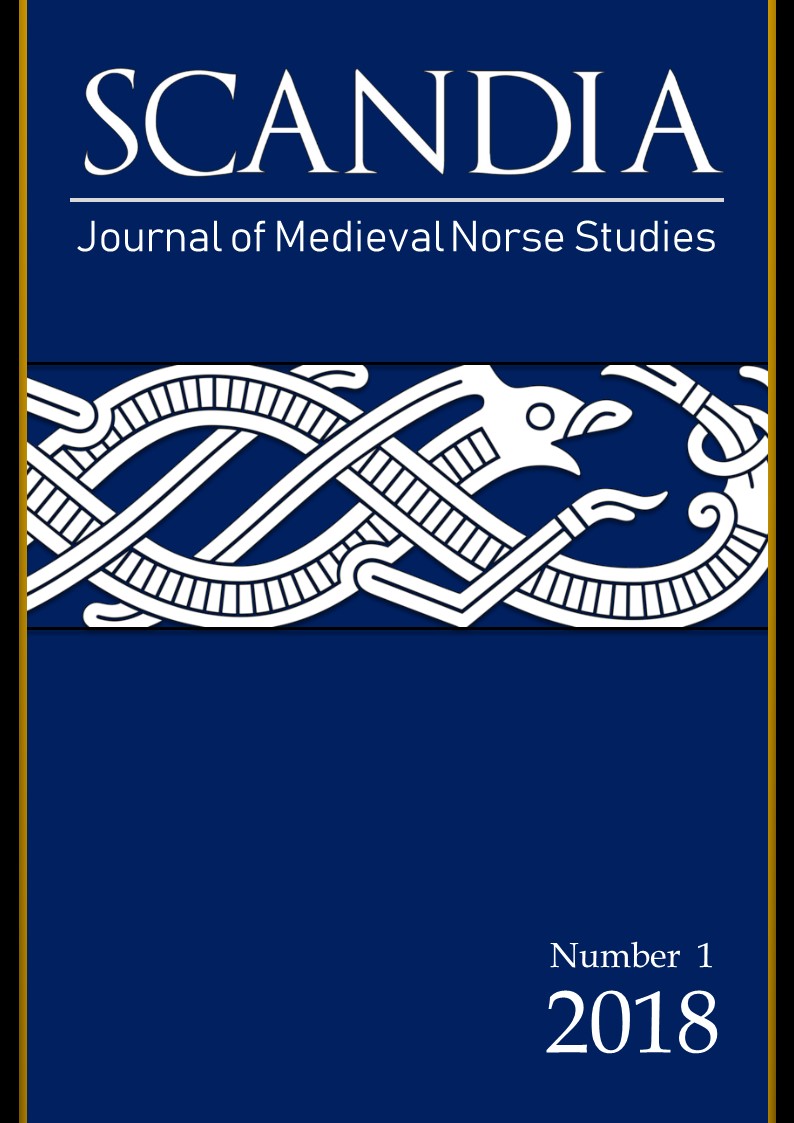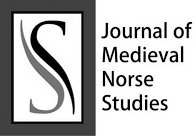Wotan-Odin
Abstract
Odin é na Edda “o mais sábio” dos seres (Vafthrudhnismal 55). Ele é Fiolsvidh “o muito sabedor”, “o muito esperto” (Grimnismal 47). Examinada de perto, essa “sabedoria” de Odin parece muito diferente do tipo usual de onisciência divina. É um saber que se resolve em um fazer: um saber fazer, que é um poder fazer. Odin conhece todas as artes (Ynglingasaga 6), sabe assumir todas as formas (Heimskringla 1, 18), sabe encontrar os tesouros escondidos debaixo da terra (Ynglingasaga 6), sabe submeter à sua própria vontade as mulheres amadas, sabe despontar as armas dos inimigos durante o combate, sabe sanar as feridas. A fonte de todas estas virtudes é o conhecimento de fórmulas potentes (Havamal 146 segs.), e daqueles signos misteriosos que são as runas (Havamal 142 segs.). As runas, ele as obteve mercê ao seu martírio, restando por “nove noites” pendurado à arvore golpeado pelo vento em uma extenuação suprema (Havamal 138 segs.).
Downloads
References
Referências bibliográficas:
ALMGREN, O. “Hällristningar och kultbruk”. Stockholm: 1927.
ALMGREN, O. “Nordische Felszeichnungen als religiose Urkunden”. Frankfurt a Main: 1934.
BEHN, F. Angelos. 1926.
BEHN, F. Das “Mithrasheiligtum zu Dieburg”. Berlin, Leipzig: 1928.
BING. “Der Kultwagen von Trundholm u. die nordischen Felszeichnungen”. I.P.E.K. 2, 1926.
BREMER, O. “Indogermanische Forshungen”. In: Der germaniche Himmelsgott. 1894.
CAHEN, M. In: Revue de l’histoire des religions. 1925-2.
CHADWICK, H.M. “The Cult of Othin”. London: 1899.
CLEMEN, C. “Archiv f. Religionswissenschaft”. 1937.
CLEMEN, C. “Fontes historiae religionis germanicae”. In: BEROLINI. 1928.
CUMONT, F. “Comptes rendus de l’Académie des Inscriptions”. In: ROSTOVTZEFF, M. Das Mithraeum von Dura. 1934.
DE VRIES, J. “Altgermanische Religionsgeschichte II: Religion der Nord-germanen”. Berlin-Leipzig: 1937.
DE VRIES, J. “Arkiv för nordisk filologi”. 1934.
DREXEL, F. “Ueber den Kessel von Gundestrup”. In: Arch. Jahrbuch. 30. 1915.
FALK. H, J. Odensheite. “ Skrifter utgit av Videnskapsselskapet i Kristiania: historisk-filosofisk Klasse”, 1924 s.v.
German trans. Nordische Felszeichnungen als religiöse Urkunden. Frankfurt a. Main: 1934.
GJESSING, G. “De danske gullhornene fra svarthavstraktene”. In: Norsk Tidsskrift for Sprogvidenskap 7. 1934.
GJESSING, G. The one-eyed god: a study in diffusion. Comunicazione al III Congresso Internazionale delle scienze antropologiche ed etnologiche. Bruxelles: 1948.
GOLTHER, W. “Handbuch der germanischen Mithologie”. Leipzig: 1895.
GUNTERT, H. “Altgermanischer Glaube. Heidelberg: 1937.
GUNTERT, H. “Der arische Weltkonig u. Heiland”. Halle: 1923.
GUNTERT, H. “Der Ursprung der Germanen”. Heidelberg: 1934.
GUTENBRUNNER, S. “Die germanische Götternamen der antiken Inschriften”. Halle: 1936.
HAMEL, A. G. van. “Odin hanging on the tree”. In: Acta filológica Scandinavica, 7. 1932.
HAWKES, C. “Journal of Roman Studies”. 1947.
HELLQUIST.
HELM, K. “Altgermanische religionsgeschichte”. Heidelberg: 1913.
HEUSLER, A. Göttingishe Gelehrte Anzeingen. 1940.
HÖFLER, O. Kultische Geheimbünde de Germanen,1. Frankfurt am Main: 1934.
JACOB-FRIESEN, K. H. “Himmelskult im alten Norden”. In: Forschungen u. Fortschritte 7. 1931.
JENNY, W. A. v. Keltische Metallarbeiten. Berlin: 1935
JENSEN A. E. Em Paideuma 5. 1-2. 1950.
JULLIAN, C. Revue des études anciennes 10. 1908.
KARUTZ, R. “Einbein und Einaug”. In: Das Goetheanum - Internationale Wochenschrift für Anthroposophie und Dreigliederung. Basel: 1925.
KOSSINNA. In: Mannus, 2. 1910.
KRAPPE A. H. “Les corbeaux d’Odin”. In: Études de mythologie et de folklore germaniques. Paris: 1928.
KRAPPE A. H. Mythologie universelle. Paris: 1930.
LEHMACHER, G. “Der Dagde, das Haupt der irischen Götter”. In: Anthropos. 1953.
LEHNER, H. “Orientalische Missterienkulte im romischen Rheinland”. In Bonner Jahrbücher. 1924.
LOOMIS, R. SH. Celtic Myt and Arthurian Romance. New York: 1927.
MACCULLOCH, A. “Eddic Mytology”. In: The Mytology of all Races 2”. Boston: 1930
MACCULLOCH, A. The religion of the Anciente Celts. Ebinburg: 1911.
MASTRELLI, C.A. “L’Edda: carmi norreni”. In: I classici della Religione. Firenze: 1952.
MEISSNER. “Rigr, Beiträge zur Geschichte der deutschen Spracghe u. Literatur”. 1933
MEYER, R.M. Altgermanische Religionsgeschichte. Leipzig: 1910.
MOGK, E. “Germanische Religion”. In: HASS. Bilberatlas zur Religionsgechichte. **
MOGK, E. “Grundriss der germanischen Philologie”. In: Germanishe Mytologie. *
MUCH, R. “Der germaniche Himmelsgott”. In: Festgabe Heinzel. Halle: 1898.
MUCH, R. Die Germania des Tacitus. Heidelberg: 1937.
MÜLLER, S. Nordische Altertumskunde II.
NECKEL, G. “Die Gotter auf dem goldenen Horn”. In: Zeitschrift f. das deutsche Altertum, 58. 1921.
NECKEL, G. Die Götter auf dem gold.
NINCK, M. Wotan und germanicher Schicksalglauben. Jena: 1935.
NOCK, A. Gnomon. 1930.
NORDEN, E. Die germanische Urgeschichte in Tacitus Germania. Leipzig: 1923.
OHLMARKS, Åke Joel. “Heimdalls Horn und Odins Auge”, I. Lund-Kopenhagen: 1937.
OLRIK, A. “Gudefremstillinger paa guldhornene og andre äldre mindesmärker”. In: Danske Studier. 1918, p. 1-35.
OLSEN, M. “Le prêtre-magicen et le dieu-magicien dans la Norvège ancienne”. In: Revue de l’histoire des religions. 1935-II.
PERING, B. “Heimdall”. Lund: 1941.
PETTAZZONI, R. “L’onniscienza di Dio”. Torino: Einaudi, 1955.
PETTAZZONI, R. “La progenie del Sole”. In: Melanges H. G. ii. Brussels: 1951, p. 493-500.
PETTAZZONI, R. “The pagan origins of the three-headed representation of the Christian Trinity”. In: Journ. of the Warburg and Courtauld Institutes 9. 1946, p. 150-151, fig. 15.
PHILIPPSON. Gremnanisches Heidentum bei den Angelsachsen. Leipzig: 1929.
PIPPING, H. “Edda Studier” I-III, in: Studier i nordisk filologi. 1925.
REVUE CELTIQUE 12. 1891
RINGBOM, L. J. “Gallehushornens Bilder”. In: Acta Academiae Aboensis Humaniora. 1949.
ROSTOVTZEFF, M. “Das Mithraeum von Dura. In: Römische Mitteilungen. 1934.
SALVEN, E. Bonaden från Skog. Stockholm: 1923.
SAXL, F. “Mithra”. 1931.
SCHRÖDER, F. R. “Die Germanen”. In: BERTHOLET, A. Religionsgeschictliches Lesebuch. Tübingen: 1929.
SCHNEIDER, H. “Die Felszeichnungen von Bohuslän, das Grab von Kivik, die Goldhörner von Galleus und der Silberkessel von Gundestrup als Denkmälerder vorgeschichtlichen Sonnenreligion in: Veröffentlichungen des Providenzialmuseums zu Halle I, 2, 1918.
SCHRÖDER, F. R. Altgermanische Kulturprobleme. Berlin-Leipzig: 1929a.
SCHRÖDER, F. R. Forschungen und Fortschritte V. 1929b.
SCHRÖDER, F. R. Quellenbuch zur germanischen Religionsgeschichte. Berlin-Leipzig: 1933.
SCHROEDER, L. von. Arische Religion, I. 1914.
SCHÜTTE, G. Diinisches Heiden tum. Heidelberg: 1923
SCHWEITZER, B. Herakles. Tübingen: 1922.
STURTEVANT HOPKINS, G. Indoeuropean *deiwos and related words.
TYLOR, E. B. “Primitive Culture”.
UHLENBECK, C. C. “Acta philologica scandinavica”. 1926.
WAHLE, E. “In Deutsche Vorzeit”. Leipzig: 1932
WENIGER, L. “Feralis exercitus”. In A.R.W.: 1906.
WIKÉN, E. Die Kunde der Hllenen von dem Lande und den Völkern der Apenninenhalbinsel bis 300 v. Chr. Lund: 1937, Cap. 1.
WILKE, G. “Die Religion der Indogermanen in archäologischer Beleuchtung”. Leipzig: 1923.
WINDISCH-STOKES. “Irische Texte”, III.
WORSAAE. “Nordens Forhistorie”. Köbenhavan: 1881.
Downloads
Published
Issue
Section
License
The author (s) of the original submitted undertake to comply with the following:
- All authors are publicly responsible for it.
- The authors claim that this original is their own and that they assume full responsibility to third parties, whether moral or patrimonial, by reason of its content, stating that the work does not infringe any intellectual property rights of third parties.
- The author (s) agree to the copyrights of the original to Scandia Journal, to which they grant permission for its reproduction, editing and online publication.
- The author (s) grant their copyright of their original to the Scandia Journal, licensed under the Creative Commons Attribution License, which allows the sharing of this work with the acknowledgment of their authorship.
- The author (s) have permission and are encouraged to cite and distribute their original.



